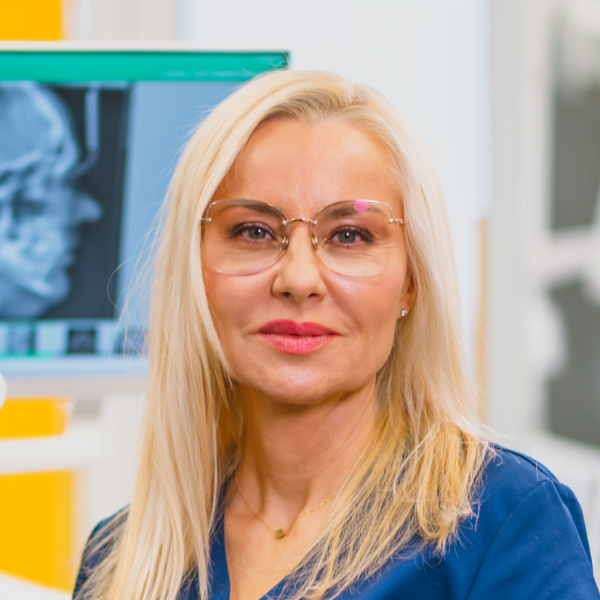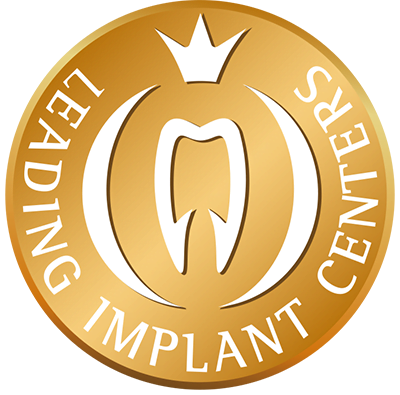Orthodontics is too often reduced to a specialty focused on aesthetics. Meanwhile, properly carried out treatment not only improves the aesthetics of the face but also improves the function of the respiratory tract and vocal function, allows to maintain healthy teeth for longer, and prevents changes in the temporomandibular joint.

Orthodontic treatment usually requires many visits. Therefore, it is worth choosing an office that will provide the patient with perfect support throughout the whole treatment process.
If necessary, our patients can undergo on-site consultations in the field of dental surgery or prosthetics. Many years of experience taught us that, depending on the expected result, such action increases the chances of treatment success. It also allows us to carry out even the most complex combined work with minimal patient discomfort.
Orthodontics is a dental specialty dealing with the prevention, diagnosis, and treatment of malocclusions and problems with the function of the temporomandibular joint. Sometimes the main patient’s treatment goal is only to improve the aesthetics of the face and teeth. However, often the orthodontist indicates additional treatment goals, especially in the case of children. The most important medical needs in the field of orthodontics include restoring airway patency and proper nasal breathing, ensuring the correct position of the tongue, and improving vocal functions. In adults, orthodontics is also an element of the prevention of certain diseases of the teeth, gums, and oral cavity, which may also have their basis in the misaligned bite.
Orthodontic treatment is not always about aesthetics. Improving teeth alignment is much more important.
It can be said that in a way, apart from these objective benefits, every patient builds their list of advantages. It may be better well-being, higher self-esteem, or the awareness that thanks to the appointments at the orthodontics office, you have gained truly healthy teeth, which will require a little less attention later on.
Orthodontic diagnostics in children should be performed at the age of 7-9. In adults, it is the sooner the better, because it gives greater treatment possibilities.
Every patient at the age of 7 should report for their first orthodontic consultation, even when the teeth appear straight and the parent or dentist does not see any disturbing abnormalities. At the age of 7-8 years, it is important to assess the development of dental arches and the diagnostics of permanent canine buds. Nowadays, more and more children are diagnosed with underdeveloped jaws and an eruption disorder of permanent canines. Early diagnosis is important because treatment at the age of 7-8 years is simple, less complicated, and more effective than in adolescents.
Through early diagnosis in children at the stage of mixed dentition, we often protect youngsters from complicated orthodontic as well as surgical procedures in their teenage and adult years.
It is important to have the first orthodontist’s appointment scheduled during the early mixed dentition period of 7-8 years, i.e. when the child has deciduous teeth and first permanent teeth. You should not wait until your child is old enough to have all their permanent teeth erupted.
In the case of younger children who go through the milk dentition period, we recommend consultation visits. In the event of abnormalities during the milk dentition period, our specialists also undertake the treatment or prevention needed at this age to avoid the development of defects in the future.
We use all available diagnostic methods, including pan-tomographic, cephalometric, and 3D images – CBCT (Cone Beam Computed Tomography). To reproduce teeth in the oral cavity, we use modern digital orthodontics techniques, an oral scan, and traditional dental impressions.
Its attachment is quite simple, and because such braces are fixed to the teeth permanently, they work all the time. Their design ensures maximum comfort of cleaning, which is important from the point of view of the patient’s oral hygiene. On average, treatment lasts from one to two and a half years. The duration of orthodontic treatment depends on the defect, the complexity of a given case, and the patient’s cooperation.
This is a developed version of the classic fixed braces. Such braces have a similar visual design but differ in the presence of a bracket or a clip that holds the wire. They are more comfortable and hygienic and do not require the use of bands around the lock. Self-ligating braces provide gentler treatment mechanics, generate smaller physiological forces, and act on bones and teeth more gently compared to classic braces. They allow the expansion of dental arches and the effects of treatment come faster.
It is an aesthetic solution that allows you to gradually correct even quite large deviations from the desired position, without the need to remove teeth or use palatal expanders. The advantage of the self-ligating braces compared to the classic braces is a smaller number of appointments during the entire treatment period (they are less frequent, i.e. every 6-8 weeks). Using the classic braces, orthodontists’ appointments are required every 3-4 weeks to change the elastic ligatures around the locks holding the wire (the so-called bands) which relatively quickly stretch and get covered by the bacterial plaque. Using self-ligating braces, the defect correction time is faster compared to permanent classic orthodontic braces.
In HCentrum Stomatologiczne Jasińscy, the recommended self-ligating device is the Damon system made by the American company Ormco. We use a metal version or aesthetic version of ceramic braces called Damon Clear. Many world-famous orthodontists, such as Dr. Derek Mahony and others, successfully use this system.
We implement orthodontic procedures using special mini-screws temporarily screwed into the jaw bones under local anesthesia. The use of modern techniques and systems of micro-implants gives the possibility of obtaining better results in orthodontic treatment, often impossible without their use. The patient wears mini-screws only temporarily. They are removed during or immediately after treatment. Mini-screws are often an alternative to the treatment of complex bone and dental defects with an indication for orthognathic treatment (jaw bone surgery).
Using modern world-class techniques according to famous orthodontists’ procedures (ChrisChang system), we provide our patients with excellent and modern orthodontic treatment without the need for surgical methods, often impossible to achieve with classical techniques.
In this case, the treatment consists of wearing braces that are usually removed for brushing and sometimes for eating, i.e., they are not permanently attached to the oral cavity. Therefore, the treatment depends on the patient’s cooperation, hence the treatment time may be longer. Such braces, however, allow to correct the bite in the phase of active bone growth. Adjustments of the braces or their replacement will take place as part of follow-up visits.
These are braces used especially for younger children in the period of milk and mixed dentition. These are usually child-friendly soft pads worn at night and for 1-2 hours a day used to restore the normal function of the muscles of the mouth and cheeks and train the tongue to its correct position. Early treatment with these simple and uncomplicated myofunctional appliances will help inhibit the development of many orthodontic defects by restoring proper neuromuscular balance. Early orthodontic treatment of young children (3-6 years) will protect them in many cases from the often complicated treatment with fixed braces.
The list of indications for orthodontic treatment does not seem long, but it must be taken into account that every one of these points is assessed subjectively, so in any case it is worth consulting a specialist.
If the patient feels that their smile line is imperfect, it can often be orthodontically corrected. The same applies to most functional disorders related to dental abrasion or overlapping.
Orthodontic treatment takes a long time, although its time depends on the chosen technique and the scope of the necessary correction.
Usually, during follow-up visits, the patient undergoes a standard dental examination to detect possible problems with the beginnings of caries, etc. Theoretically, most dental procedures can be carried out with braces in place, but the more serious ones, such as microscopic root canal treatment should be carried out earlier.
Retention is necessary after the completion of orthodontic treatment and removal of braces. It most often consists of the installation of permanent delicate wires, the so-called retainers, which are glued to the teeth. The patient is also given a special Damon splint to be worn overnight. The retention period lasts about 2 years and prevents undesirable dental shifts, the so-called recurrence of the defect.
A friendly atmosphere and the highest level of professionalism are our hallmarks. We offer orthodontic treatment plans that ensure good facial aesthetics while maintaining a healthy respiratory tract and temporomandibular joints. We always choose the best braces and perform world-class orthodontic procedures. While gaining knowledge from the best, we carry out the entire orthodontic treatment step by step with extraordinary care.
If you notice that your teeth do not form the line of a beautiful smile, contact us and arrange an orthodontic diagnostics. It’s never too late to start treatment, but the sooner the better. We can carry out even more complex, combined treatment procedures in the field of orthodontics, even before the placement of prostheses or implants.


HCentrum Stomatologiczne Jasińscy is a member of the prestigious organization, Leading Implants Centers, which brings together the best implant offices in Europe.
